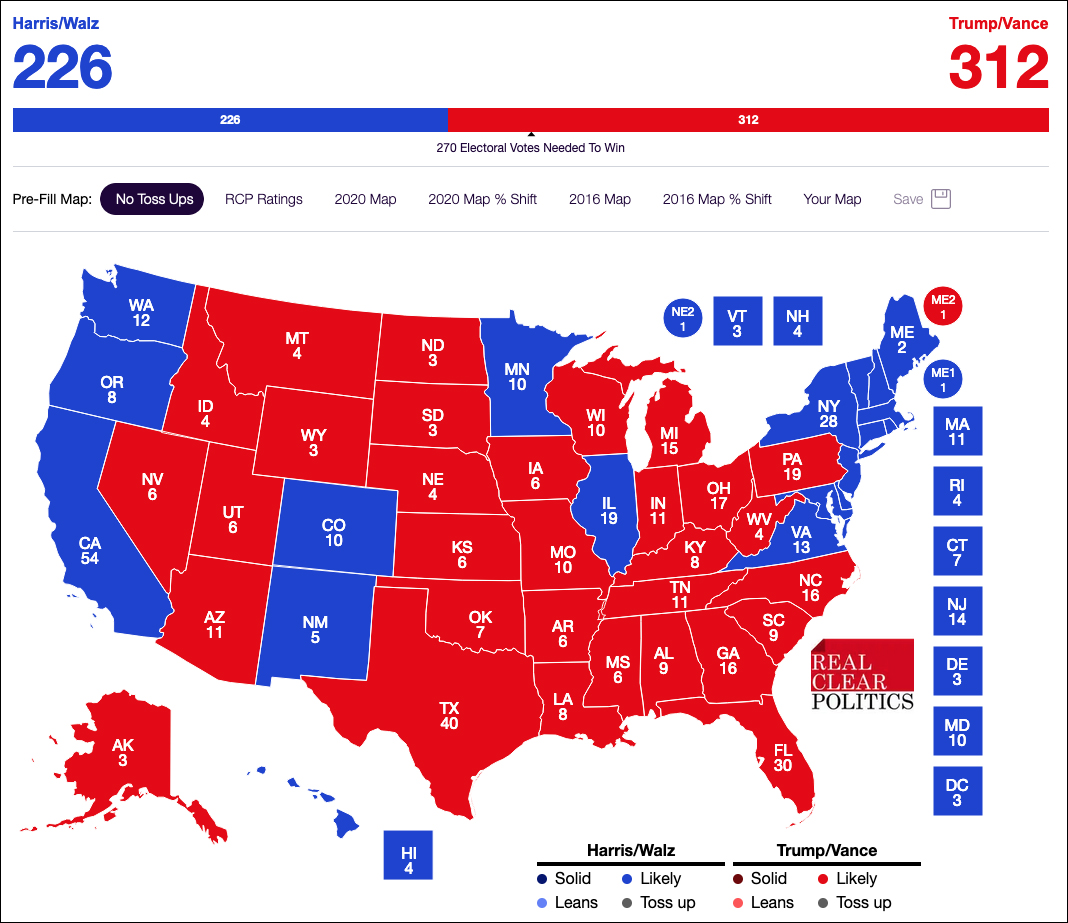By Jim Ellis — Tuesday, Oct. 22, 2024
Senate

Sen. Jon Tester (D), Montana, has raised $31.7 million in just the past three months. / Photo by Jared King, Navajo Nation Washington Office
The Down Ballot calculations indicate that “Democratic candidates collectively raised $452 million dollars, almost twice as much as the $235 million brought in by their GOP rivals.” The gap might be the largest in the Senate races as compared to the Presidential and House campaigns, but just how much will the money advantage mean in terms of winning and losing?
The three biggest fundraisers for the third quarter with incredible totals begin with Sen. Jon Tester’s (D-MT) $31.7 million raised in just the past three months. Closely following are Sen. Sherrod Brown (D-OH) with $29.8 million raised, and Texas Rep. Colin Allred (D-Dallas) securing $29.7 million.
Despite the huge fundraising and spending advantage, however, the latest polling shows all three of these candidates trailing their Republican opponents. In the Montana race, the New York Times/Siena College survey (Oct. 5-8; 656 likely Montana voters; live interview) sees Republican Tim Sheehy leading Sen. Tester, 52-44 percent, despite his overall better than 3:1 fundraising edge.
In Ohio, Sen. Brown posts a cycle-to-date dominance of more than 4:1 in campaign spending, but the latest survey from the Morning Consult track (Oct. 6-15; 1,243 likely Ohio voters; online) gives Republican businessman Bernie Moreno a one-point lead, 48-47 percent.
While Rep. Allred outraised Sen. Ted Cruz (R-TX) $29.7 million to $17.1 million during the Q3 period, the two are at parity for cycle-to-date fundraising: $64.1 million for Allred; $63.7 million for Cruz. The latest YouGov poll for the University of Texas’ Texas Politics Project (Oct. 2-10; 1,091 likely Texas voters; online), however, gives Sen. Cruz a 51-44 percent advantage.
What these fundraising and polling numbers show is that a larger advantage in campaign resources and spending does not necessarily guarantee majority support.
Overall, an aggregate $340-plus million was raised in the 3rd quarter from the 79 charted Senate candidates with an average of $4.3 million per contender in just the 13-plus week reporting period from July 1- Sept. 30. The median average, however, is $1.084 million, meaning an equal number of candidates have raised more and less than that number.
One of the more interesting late-breaking races is the Nebraska Senate race featuring two-term incumbent Sen. Deb Fischer (R). While not having a Democratic opponent, Sen. Fischer faces Independent Dan Osborn, who is making her re-election battle much more difficult than anyone would have imagined at the beginning of the election cycle in what should be a safe Republican state. In the Q3, Osborn out-raised Sen. Fischer, $3.2 million to $915,000, but the incumbent still maintains the overall spending advantage, $7.1 million to $4.2 million.
The biggest Q3 gap in fundraising, as it has been throughout the election cycle, comes in the Michigan Senate race. For the 3rd quarter, Rep. Elissa Slotkin (D-Lansing) raised $18 million versus former Rep. Mike Rogers (R) pulling in $4.4 million, which, incidentally, is his best fundraising quarter for the election cycle. In the cycle-to-date categories, Slotkin leads Rogers $40.3 million to $9.4 million in fundraising and $35.9 million to $6.6 million in spending.
While the polls have always favored Rep. Slotkin, her margin is not overly strong, an average of 4.3 points from 14 October polls. Slotkin’s largest lead is nine points (The Bullfinch Group; Oct. 11-17), collapsing as far as Rogers posting a one-point edge (AtlasIntel; Oct. 12-17).
While the Senate Democratic candidates enjoy a huge advantage in fundraising, the aggregate outside organization spending has brought the two parties closer to parity. Most of the independent expenditures favor the Republican side either in money for pro-Republican candidate ads and programs, or anti-Democratic ads and programs.
Including all levels of federal campaigning (President, Senate, and House), the conservative outside organizations have outspent the liberal organizations by a 2:1 margin, $1.3 billion to $566 million according to the Open Secrets data organization.
It is clear that both sides have more than enough financial resources with which to communicate their message to the American electorate. It is always better to have more money than less, but it is not always necessary to be the top spender in a race.







